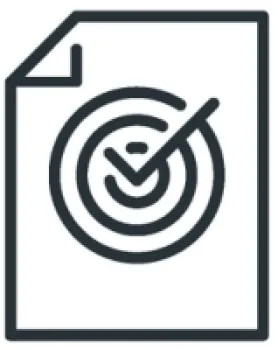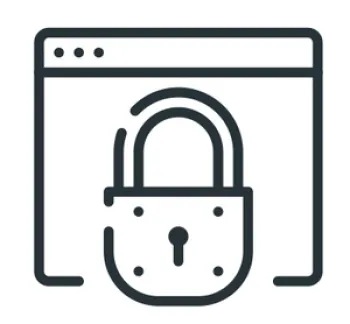
Compliance-as-a-Service

What is "Compliance-as-a-Service"?
Compliance-as-a-Service (CaaS) is a comprehensive, outsourced solution that helps organizations navigate, manage, and maintain compliance with various regulatory, legal, and industry-specific standards. Delivered typically by Managed Service Providers (MSPs) or specialized compliance firms, CaaS offers businesses a scalable and cost-effective way to ensure they meet requirements like GLBA, HIPAA, GDPR, PCI-DSS, SOC 2, ISO 27001, and others—without having to build and manage internal compliance expertise.
A CaaS solution usually includes:
- Continuous Monitoring: Automated tools that monitor systems, networks, and processes for compliance-related issues.
- Risk Assessments: Regular evaluations to identify vulnerabilities or non-compliance risks.
- Policy Management: Assistance in creating, maintaining, and enforcing compliance-related policies and procedures.
- Audit Preparation & Reporting: Helping businesses prepare for audits and generate necessary compliance reports.
- Security Tools Integration: Leveraging tools like endpoint protection, encryption, and access control to align IT infrastructure with compliance requirements.
- Expert Guidance: Access to compliance experts who provide support, consultation, and updates on regulatory changes.
The goal of CaaS is to reduce the burden on internal teams, lower the risk of non-compliance penalties, and ensure businesses can focus on their core operations while staying secure and compliant. It's especially valuable for SMBs and industries with stringent compliance mandates like healthcare, finance, and legal sectors.


Frequently Asked Questions (FAQs)
Can PDC Technology help with compliance across different industries?
Yes, our experts are well-versed in the specific compliance requirements of various industries such as:
- CPA & Accounting Firms
- Insurance & Financial Services
- Car Dealerships
- Medical Industry
How does PDC Technology ensure my business stays compliant?
At PDC Technology, we employ a methodical, step-by-step process to help organizations successfully navigate their compliance initiatives. Compliance can be a complex and multifaceted process, involving stringent regulations, evolving standards, and detailed documentation requirements. Tackling it all at once can be overwhelming and lead to oversights and inefficiencies, which is why we emphasize taking it one step at a time.
Our approach begins with a comprehensive assessment to identify gaps and determine the specific regulatory requirements relevant to your industry. From there, we develop tailored strategies, implement robust solutions, and provide ongoing monitoring to ensure adherence to compliance standards. By breaking the process into manageable phases, we reduce overwhelm, ensure thoroughness, and help your organization stay on track. This structured approach simplifies the complexities of compliance, enabling you to achieve your goals with confidence and efficiency while minimizing risks.
Aren't IT Services and Compliance Services the same?
No, compliance services are not the same as IT services, although they are closely related and often overlap.
IT services focus on managing and maintaining an organization's technology infrastructure, such as network monitoring, cybersecurity, troubleshooting, data backups, and user support. The primary goal of IT services is to ensure that technology systems are running efficiently and securely to support business operations.
Compliance services, on the other hand, focus on ensuring an organization meets specific legal, regulatory, and industry standards, such as GLBA, HIPAA, PCI DSS, GDPR, or SOX. These services involve activities like compliance audits, risk assessments, policy creation, documentation, and adherence to data protection laws. Compliance services go beyond basic IT management by addressing regulatory requirements and aligning IT systems with those standards.
While compliance services often rely on IT solutions (like encryption, access controls, and monitoring) to meet requirements, they involve additional expertise, tools, and processes tailored to regulatory adherence. For this reason, compliance services are considered an "add-on" to standard IT services rather than a part of them.
How will Governance, Risk Management, & Compliance affect my insurance?
Governance, Risk Management, and Compliance (GRC) can significantly impact your organization's insurance in several ways, particularly in terms of cyber liability insurance and overall risk mitigation. Here's how:
1. Lower Premiums
Effective GRC practices demonstrate to insurers that your organization has robust policies, processes, and controls in place to mitigate risks. By showing a strong risk management posture, including documented compliance with industry regulations and effective governance frameworks, insurers may view your business as a lower risk, potentially resulting in reduced insurance premiums.
2. Improved Coverage Eligibility
Many insurance providers require businesses to meet specific security and compliance standards to qualify for cyber liability insurance. Adopting a GRC framework helps you meet these requirements by ensuring proper documentation, policies, and controls are in place. This increases your eligibility for broader or more comprehensive coverage.
3. Better Claims Support
A solid GRC framework ensures you have documented policies, procedures, and response plans in place, which can be crucial when filing an insurance claim. For example, in the event of a cybersecurity incident, evidence of proactive risk management, compliance, and governance can streamline the claims process and demonstrate your organization's due diligence to insurers.
4. Risk Reduction
GRC helps reduce risks associated with data breaches, operational disruptions, and regulatory penalties. Insurers take into account the effectiveness of your risk management strategies when assessing your coverage needs and potential liabilities. A well-executed GRC framework not only reduces the likelihood of incidents but also reassures insurers that your organization is managing its risks responsibly.
5. Alignment with Policy Requirements
Insurance policies often include specific clauses related to data protection, compliance, and incident response. Implementing a GRC framework ensures your organization aligns with these requirements, reducing the risk of denied claims due to non-compliance with policy terms.
By adopting strong GRC practices, your organization can not only enhance its overall risk posture but also improve relationships with insurance providers, secure better coverage terms, and potentially lower costs. This makes GRC a strategic investment in both security and financial protection.
What is the NIST CSF (Cybersecurity Framework)?
The NIST Cybersecurity Framework (NIST CSF), developed by the National Institute of Standards and Technology, is a flexible and comprehensive set of guidelines designed to help organizations manage and reduce cybersecurity risks. Unlike regulatory mandates or compliance requirements, the NIST CSF is not a legal obligation. Instead, it provides a structured approach that organizations can adapt to review and improve their security practices in alignment with their unique goals and risks.
Key Components of the NIST CSF
At its core, the framework is built around five essential functions that form a holistic roadmap for strengthening cybersecurity:
- Identify: Understand and manage cybersecurity risks by identifying systems, assets, data, and capabilities critical to the organization.
- Protect: Implement safeguards to secure critical infrastructure and services from potential threats.
- Detect: Establish tools and processes to identify cybersecurity incidents promptly.
- Respond: Develop plans to contain and mitigate the impact of cybersecurity incidents when they occur.
- Recover: Ensure the organization can restore operations and minimize disruption following an incident.
- These functions provide a high-level structure for organizations to analyze their current cybersecurity posture and implement improvements effectively.
NIST CSF as a Framework, Not a Regulation
The NIST CSF differs from regulatory requirements in that it is voluntary and adaptable. Regulatory mandates, such as HIPAA, PCI DSS, or GDPR, specify specific rules organizations must follow to remain compliant. In contrast, the NIST CSF offers a customizable framework of best practices and guidelines, allowing organizations to align their cybersecurity strategies with their specific needs and risk profiles.
By implementing the NIST CSF, organizations often align with controls and requirements from other regulatory standards and frameworks. For example, the framework's focus on access control, data protection, and incident response overlaps with key requirements in regulations like HIPAA for healthcare, PCI DSS for payment security, and GDPR for data privacy. This alignment helps streamline compliance efforts and reduces the burden of managing multiple regulatory requirements simultaneously.
Benefits of Using the NIST CSF
By adopting the NIST CSF, organizations can:
- Improve Security Posture: The framework provides a clear path to assess and strengthen defenses against cyber threats.
- Align Security with Business Goals: It integrates cybersecurity into overall organizational objectives rather than treating it as a standalone activity.
- Adapt to Changing Risks: The framework's flexibility allows for adjustments as technologies, threats, and business environments evolve.
- Streamline Compliance: Implementing the NIST CSF often satisfies overlapping controls in other regulations, simplifying compliance management.
- Build Trust: Demonstrating alignment with a respected framework like the NIST CSF instills confidence in customers, partners, and stakeholders.
The NIST CSF is not a regulatory burden but a strategic tool for improving cybersecurity. By focusing on its five core functions, organizations can systematically review and enhance their security practices, align their efforts with business goals, and prepare for the evolving threat landscape. Furthermore, implementing the framework often brings organizations into alignment with other regulatory standards, reducing complexity and improving overall compliance readiness. For those looking to adopt a structured yet flexible approach to cybersecurity, the NIST CSF provides a reliable foundation for resilience, compliance, and growth.
What is "Information Security"?
Information Security (InfoSec) is the practice of protecting an organization's data and information systems from unauthorized access, use, disclosure, disruption, modification, or destruction. It encompasses a range of strategies, technologies, and policies designed to safeguard data across all forms—whether stored digitally, transmitted electronically, or maintained physically.
The goal of information security is to uphold the CIA triad:
- Confidentiality: Ensuring that sensitive information is only accessible to authorized individuals.
- Integrity: Maintaining the accuracy and reliability of data, preventing unauthorized changes or corruption.
- Availability: Ensuring that information and systems are accessible to authorized users when needed.
InfoSec addresses risks such as cyberattacks, insider threats, data breaches, and system failures. Key components include access control, encryption, incident response, and regular audits. By implementing strong information security practices, organizations can protect their assets, comply with regulatory requirements, and maintain trust with customers, partners, and stakeholders.

Connect with Us
Empower your business with the technological excellence of PDC Technology, your trusted partner in IT Compliance Services. We provide tailored solutions to help you navigate complex regulatory requirements, safeguard sensitive data, and ensure your operations remain fully compliant.
Transform your business with our expert guidance and innovative compliance strategies—contact us today to explore how we can help you achieve peace of mind and long-term success.
For inquiries and more information:
- Phone: (916) 799-6322





